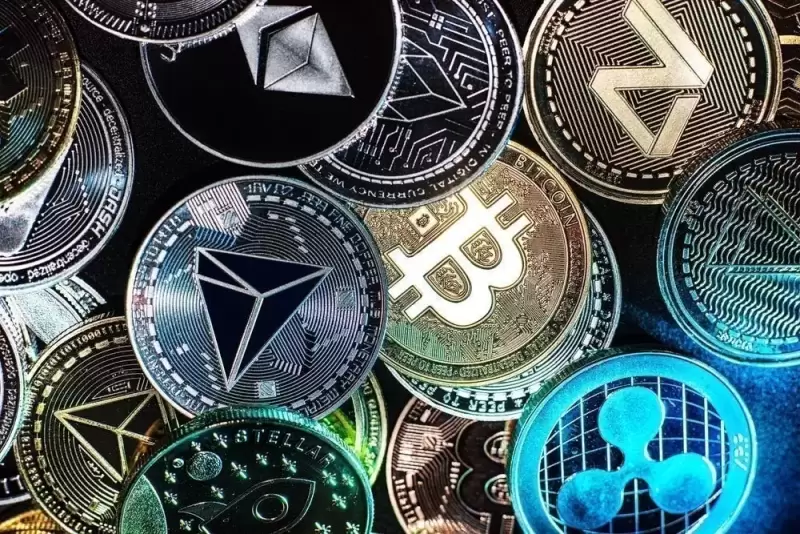 |
|
 |
|
 |
|
 |
|
 |
|
 |
|
 |
|
 |
|
 |
|
 |
|
 |
|
 |
|
 |
|
 |
|
 |
|
本週,美國商務部(USDOC)致函台積電(台積電)(納斯達克股票代碼:TSM),要求該公司暫停向中國企業運送先進人工智慧(AI)晶片。

The United States Department of Commerce (USDOC) has ordered Taiwan Semiconductor Manufacturing Co. (TSMC) (NASDAQ: TSM) to halt shipments of advanced artificial intelligence (AI) chips to Chinese companies, according to a letter obtained by Reuters on Monday.
路透社週一獲得的一封信函顯示,美國商務部 (USDOC) 已命令台積電 (TSMC)(納斯達克股票代碼:TSM)停止向中國公司運送先進人工智慧 (AI) 晶片。
The USDOC issued this directive after discovering a TSMC chip in a Huawei AI processor, sparking concerns over international entities breaching U.S. trade restrictions. Huawei has been on the U.S. restricted trade list for several years, and any company engaging in business with Huawei must obtain a U.S. license, particularly if the technology could enhance Huawei's capabilities. If the U.S. identifies the trade or business activity as posing a threat to the United States or bolstering China's innovation or development, the license application will likely be denied.
美國商務部在華為人工智慧處理器中發現台積電晶片後發布了這項指令,引發了人們對國際實體違反美國貿易限制的擔憂。華為多年來一直被列入美國限制貿易名單,任何與華為開展業務的公司都必須獲得美國許可,特別是如果該技術可以增強華為的能力。如果美國認定該貿易或商業活動對美國構成威脅或支持中國的創新或發展,則許可申請可能會被拒絕。
Following the USDOC's order, TSMC notified its Chinese customers that it would suspend semiconductor shipments to them. This incident underscores the escalating tensions between the U.S. and China over technological advancements in AI.
根據美國商務部的命令,台積電通知其中國客戶,將暫停向他們運送半導體。這事件凸顯了中美之間圍繞著人工智慧技術進步的緊張關係不斷升級。
As the world leader in AI, the U.S. is determined to protect its position and aims to restrict access to technology that could catalyze or support innovation outside its borders. The U.S. fears that advanced AI capabilities in countries like China could pose a security threat, prompting the U.S. to impose increasingly stringent controls on tech exports. As evident in the TSMC case, the U.S. governs domestic exports and exerts its influence to regulate international companies interacting with entities it deems a potential threat.
身為人工智慧領域的世界領導者,美國決心保護其地位,並旨在限制獲取可能催化或支持境外創新的技術。美國擔心中國等國家的先進人工智慧能力可能構成安全威脅,促使美國對技術出口實施越來越嚴格的控制。正如台積電案所表明的那樣,美國管理國內出口,並發揮影響力來監管與其認為具有潛在威脅的實體互動的國際公司。
Amazon continues its foray into the AI chip market with Trainium 2, a new addition to its growing lineup of in-house AI chips, according to TechCrunch. Amazon Web Services (AWS) has stated that the company will not abandon its use of NVIDIA's (NASDAQ: NVDA) chips. However, it aims to provide its customers with a cost-efficient alternative, which Amazon hopes will entice businesses seeking to optimize their AI infrastructure with Amazon's own chips.
根據 TechCrunch 報導,亞馬遜繼續進軍人工智慧晶片市場,推出了 Trainium 2,這是其不斷成長的內部人工智慧晶片陣容的新成員。亞馬遜網路服務(AWS)表示,該公司不會放棄使用 NVIDIA(納斯達克股票代碼:NVDA)晶片。然而,它的目標是為客戶提供一種具有成本效益的替代方案,亞馬遜希望這將吸引那些尋求使用亞馬遜自己的晶片來優化人工智慧基礎設施的企業。
Amazon's focus on in-house chip production is not a recent development. In recent years, Amazon has introduced chips like Inferentia, which reportedly reduces costs by up to 40% when powering AI model responses. These potential cost savings are appealing to companies running large-scale operations where AI costs can reach millions, if not billions, annually.
亞馬遜專注於內部晶片生產並不是最近的事。近年來,亞馬遜推出了 Inferentia 等晶片,據報道,該晶片在支援 AI 模型響應時可將成本降低高達 40%。這些潛在的成本節約對於大規模營運的公司來說很有吸引力,這些公司的人工智慧成本每年可能達到數百萬甚至數十億。
Building chips internally is a strategy being adopted by several tech giants. Apple (NASDAQ: AAPL) was an early adopter of this approach, creating proprietary chips for better and cheaper integration across its devices. Recently, OpenAI announced it would follow suit when the company shared its plans to produce in-house chips.
內部建構晶片是多家科技巨頭正在採取的策略。蘋果(納斯達克股票代碼:AAPL)是這種方法的早期採用者,創建專有晶片以更好、更便宜地跨其設備進行整合。最近,OpenAI 宣布將效仿該公司分享其生產內部晶片的計劃。
There are numerous benefits to having a vertically integrated operation. Companies can reduce long-term costs and improve efficiency by designing chips tailored to specific operations. Customized chips can often execute tasks faster and more efficiently than general-purpose ones made by third parties, providing an advantage for companies looking to maintain a competitive edge in their specific niche.
垂直整合營運有很多好處。公司可以透過設計適合特定操作的晶片來降低長期成本並提高效率。客製化晶片通常比第三方製造的通用晶片更快、更有效率地執行任務,為希望在特定領域保持競爭優勢的公司提供了優勢。
Elon Musk's X (formerly Twitter) is rolling out a free-to-use version of its AI chatbot, Grok, making it accessible to a broader audience, reports The Verge. Grok was initially launched exclusively for Premium users, who pay a monthly fee for various perks on the social media platform, but Grok's free version is currently being tested in select countries.
根據 The Verge 報導, Elon Musk 的 X(前身為 Twitter)正在推出其人工智慧聊天機器人 Grok 的免費版本,讓更廣泛的受眾能夠使用它。 Grok 最初是專門為高級用戶推出的,他們需要按月付費以獲得社交媒體平台上的各種福利,但 Grok 的免費版本目前正在某些國家/地區進行測試。
However, the free version of Grok comes with limitations. Users can only make up to 10 queries every two hours with the Grok-2 model, 20 queries every two hours with the Grok-2 mini model, and ask three image analysis questions daily.
然而,Grok 的免費版本有其局限性。使用者使用 Grok-2 模型每兩小時最多只能進行 10 次查詢,使用 Grok-2 mini 模型每兩小時最多只能進行 20 次查詢,每天提出 3 個影像分析問題。
For tech giants, having a proprietary chatbot is almost an expectation—if competitors have one, they must, too. This proliferation of chatbots raises an important question: How many do we really need? While more chatbot options seem like a positive development, some users—including myself—begin to wonder why the world needs so many AI chatbots that effectively do the same thing.
對於科技巨頭來說,擁有一個專有的聊天機器人幾乎是一種期望——如果競爭對手擁有一個,他們也必須擁有一個。聊天機器人的激增提出了一個重要問題:我們真正需要多少?雖然更多的聊天機器人選項似乎是一個積極的發展,但一些用戶(包括我自己)開始想知道為什麼世界需要如此多的人工智慧聊天機器人來有效地做同樣的事情。
Each new chatbot claims unique features, but the functionality remains largely the same for most users. Some do have specialized capabilities, but most users seem to engage with chatbots for similar tasks, which makes these slight advantages from chatbot to chatbot inconsequential.
每個新的聊天機器人都聲稱具有獨特的功能,但對於大多數用戶來說,功能基本上保持不變。有些確實具有專門的功能,但大多數用戶似乎都在使用聊天機器人來完成類似的任務,這使得聊天機器人之間的這些微小優勢變得無關緊要。
At the moment, OpenAI's ChatGPT stands as the frontrunner in this field, and it doesn't look like it will change anytime soon, especially with the company recently raising billions of dollars at a historic valuation. However, it is only a matter of time before the other chatbots on the market either carve out their section of the legaltech market, get acquired, or cease to exist.
目前,OpenAI 的 ChatGPT 是該領域的領跑者,而且這種情況似乎不會很快改變,尤其是該公司最近以歷史估值籌集了數十億美元。然而,市場上的其他聊天機器人要么在法律科技市場中佔據一席之地,要么被收購,要么不復存在,這只是時間問題。
In order for artificial intelligence (AI) to work right within the law and thrive in the face of growing challenges, it needs to integrate an enterprise blockchain system that ensures data input quality and ownership—allowing it to keep data safe while also guaranteeing the immutability of data. Check out CoinGeek’s coverage on this
為了讓人工智慧(AI) 在法律範圍內正常運作並在面臨日益嚴峻的挑戰時蓬勃發展,它需要整合一個企業區塊鏈系統,以確保資料輸入品質和所有權,使其能夠保證資料安全,同時保證不變性的資料。請參閱 CoinGeek 對此的報導
免責聲明:info@kdj.com
所提供的資訊並非交易建議。 kDJ.com對任何基於本文提供的資訊進行的投資不承擔任何責任。加密貨幣波動性較大,建議您充分研究後謹慎投資!
如果您認為本網站使用的內容侵犯了您的版權,請立即聯絡我們(info@kdj.com),我們將及時刪除。
-
![比特幣[BTC]交換流出峰值,超過20,000 BTC遷移到市場 比特幣[BTC]交換流出峰值,超過20,000 BTC遷移到市場](/assets/pc/images/moren/280_160.png)
- 比特幣[BTC]交換流出峰值,超過20,000 BTC遷移到市場
- 2025-04-03 13:10:13
- 在過去的96小時中,超過21,000比特幣[BTC]已轉移到交換中,這標誌著交換儲備中的巨大尖峰。
-

- 在過去的96小時內,超過21,000個比特幣轉移到交易所,標誌著交換儲量的重大尖峰
- 2025-04-03 13:10:13
- 從歷史上看,這種流入通常表示賣方壓力的增長,尤其是當交易者預計本地頂級時。
-

-

-

- 唐納德·特朗普總統的“解放日”關稅衝擊之後,領先的加密貨幣撤回了星期三晚上
- 2025-04-03 13:00:12
- 比特幣和以太坊急劇逆轉,低至82,182.32美元和1,780美元。
-

-

-

- RCO財務利用AI毫不費力
- 2025-04-03 12:55:13
- 管理投資組合需要時間,技能和持續的市場監控。值得慶幸的是,由於引入基於AI的交易,這種趨勢正在發生變化。
-

- 比特幣價格急劇下降
- 2025-04-03 12:50:12
- 比特幣價格設法超過了82,500美元的支持區。 BTC形成了一個基礎,最近在83,500美元的電阻區上開始了不錯的恢復浪潮。




















































![比特幣[BTC]交換流出峰值,超過20,000 BTC遷移到市場 比特幣[BTC]交換流出峰值,超過20,000 BTC遷移到市場](/uploads/2025/04/03/cryptocurrencies-news/articles/bitcoin-btc-exchange-outflows-spike-btc-move-market/middle_800_480.webp)







